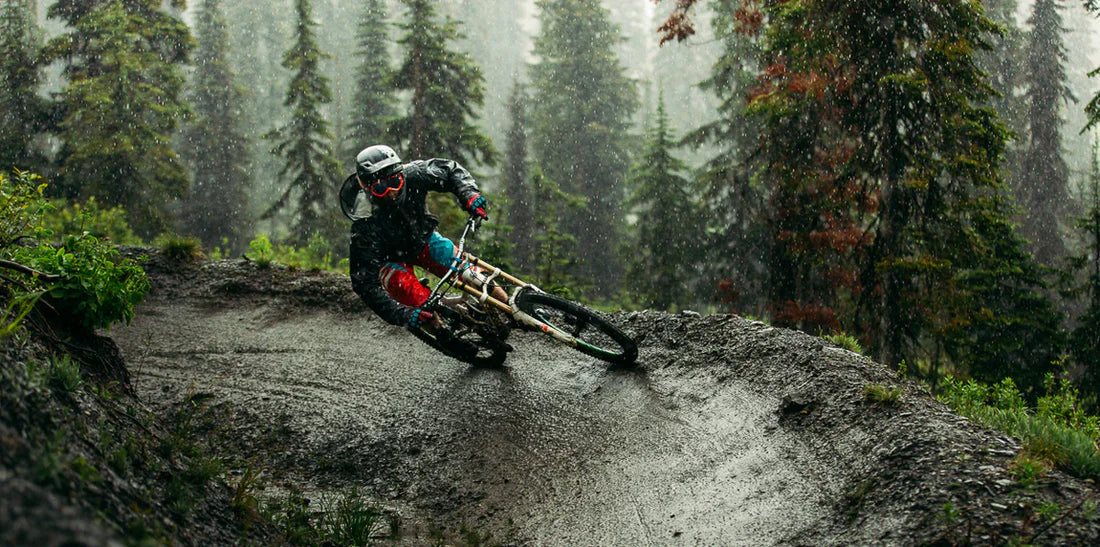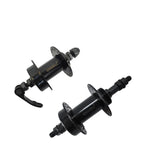Bicycle Hubs are crucial components of a bike's wheel assembly. They sit at the center of the wheel, allowing it to rotate smoothly around the axle. The front and rear hubs play different roles in a bicycle’s overall functionality, and over time, they may require maintenance or replacement of certain spare parts to ensure proper performance.
Let’s dive into the different types of bicycle hubs, their spare parts, and maintenance tips for keeping them in good condition.
What are Bicycle Hubs?
A hub is the central part of the bicycle wheel, located at the center of both the front and rear wheels. It connects to the frame via the axle and allows the wheel to rotate around it. Hubs house essential components like bearings and the freehub mechanism (for rear hubs), which enable smooth rotation of the wheel.
Types of Bicycle Hubs
-
Front Hubs:
-
Purpose: The front hub supports the wheel and allows it to rotate when the rider pedals or coasts.
-
Design: Front hubs typically don’t have the freewheel mechanism (as they don't need to coast), and the axle is often shorter than that of the rear hub.
-
Common Types:
-
Quick Release: A type of hub that allows easy wheel removal without tools. The axle is held in place by a lever that can be tightened or loosened.
-
Thru-Axle: A hub that uses a solid axle to secure the wheel to the frame, providing more strength and stiffness, especially for mountain bikes.
-
Rear Hubs:
-
Purpose: The rear hub not only supports the wheel but also houses the freehub or freewheel mechanism that allows the wheel to coast when the rider stops pedaling.
-
Design: Rear hubs are typically wider and more complex than front hubs, as they include the freehub system that engages with the chain when the rider pedals.
-
Common Types:
-
Freehub: A rear hub that has a ratchet mechanism to allow the wheel to freewheel (coast). It is widely used in modern bikes and allows for smoother shifting and better engagement.
-
Freewheel Hub: An older design where the freewheel mechanism is threaded directly onto the hub.
-
Internal Gear Hubs: These hubs have gears built into them, allowing shifting without the need for external derailleurs. They are used in some city or commuter bikes.
Key Components of Bicycle Hubs
The hub is composed of several essential parts that work together to ensure smooth performance:
-
Hub Shell:
-
Description: The outer casing of the hub that houses all the internal components. It is typically made of aluminum or steel.
-
Function: It provides structural support for the hub and the bearings inside. It is the part to which spokes are attached.
-
Bearings:
-
Description: Bearings allow the hub shell to rotate smoothly around the axle. They reduce friction and ensure the wheel spins freely.
-
Types:
-
Loose Ball Bearings: Small steel balls placed in a cage inside the hub.
-
Cartridge Bearings: Sealed units that protect the bearings from dirt and water, providing longer-lasting performance.
-
When to Replace: Bearings wear out over time, especially if exposed to water or dirt. If the hub becomes rough, gritty, or makes noise when spinning, it might indicate that the bearings are worn.
-
Axle:
-
Description: The axle is the central shaft that connects the hub to the frame of the bicycle. It allows the wheel to rotate.
-
Types:
-
Quick Release Axles: Used for easy wheel removal and installation without the need for tools.
-
Thru-Axles: A stronger, more secure type of axle used in modern mountain bikes and performance bikes.
-
When to Replace: The axle is typically durable, but if it bends, gets damaged, or becomes rusty, it should be replaced.
-
Freehub/Freewheel Mechanism (For Rear Hubs):
-
Description: The freehub is the part of the rear hub that allows the wheel to spin freely when you stop pedaling. It includes a ratchet mechanism that engages with the chain when pedaling.
-
Freewheel: An older type of mechanism that screws onto the rear hub and allows the wheel to coast.
-
When to Replace: If the freehub starts making noise, slipping, or failing to engage the chain, it’s time for a replacement.
-
Ratchets and Pawls (For Freehub Mechanism):
-
Description: These are the internal components inside the freehub that engage with the cog when the rider pedals.
-
When to Replace: If the ratchets or pawls become worn or broken, the freehub will not engage properly, and the bike may fail to drive the wheel correctly.
-
Hub Flanges:
-
Description: The flanges are the parts of the hub where the spokes are attached. They provide structural integrity to the wheel.
-
When to Replace: These parts can become damaged if the wheel is subjected to impacts, which may require replacing the hub entirely if severely damaged.
Common Bicycle Hub Spare Parts
Here are the main spare parts you may need for your bicycle hubs:
-
Bearings (Cartridge or Loose Ball):
-
Description: Bearings can wear out over time, resulting in rough or gritty hub performance.
-
When to Replace: If your hub starts feeling rough, is noisy, or doesn’t spin as smoothly as before, it's time to replace the bearings.
-
Axle:
-
Description: The axle holds the hub in place and allows it to rotate. It is often made of steel or aluminum.
-
When to Replace: Axles may bend or become damaged due to accidents, excessive pressure, or corrosion. If the axle is bent or rusted, it should be replaced.
-
Hub Shell:
-
Description: The hub shell is the casing that houses the bearings and other internal components.
-
When to Replace: The hub shell can be damaged by impact or wear, and if the damage is severe enough, it may need to be replaced entirely.
-
Freehub (For Rear Hubs):
-
Description: The freehub is responsible for engaging with the cassette and allowing the wheel to coast.
-
When to Replace: If the freehub is not engaging properly, slipping, or making noise, it may need to be replaced.
-
Freewheel (For Older Hubs):
-
Description: An older mechanism found in rear hubs that allows coasting.
-
When to Replace: If the freewheel mechanism is skipping or slipping, it may need to be replaced. In some cases, it might be easier to switch to a freehub system.
-
Hub Seals:
-
Description: Seals prevent dirt, moisture, and dust from entering the bearings and other internal components.
-
When to Replace: If the seals are damaged or cracked, they should be replaced to prevent dirt from causing internal wear.
-
Ratchets and Pawls:
-
Description: These parts inside the freehub mechanism engage the cog and allow pedaling power to be transferred to the wheel.
-
When to Replace: If the ratchets or pawls are worn out or broken, the freehub may fail to engage properly.
Hub Maintenance Tips
-
Clean Regularly: Clean the hub regularly to remove dirt and water, especially after riding in wet or muddy conditions. This helps prevent corrosion and bearing wear.
-
Lubrication: Apply lubricant to the freehub and axle bearings periodically. Use grease for the bearings and light oil for the freehub mechanism. However, don’t over-lubricate, as excess oil can attract dirt.
-
Inspect for Play: Check for any play or wobble in the hub. If the hub feels loose or if you detect movement in the axle, the bearings may be worn or the axle could be damaged.
-
Wheel Truing: Ensure that your wheels are properly tensioned and true. Improper spoke tension can damage the hub shell, especially at the flange.
-
Replace Worn Parts: As soon as you notice noise, roughness, or slippage, investigate whether bearings, freehub, or pawls need replacing. Ignoring these symptoms can lead to further damage.
Conclusion
Bicycle hubs are central to your bike’s performance, supporting the wheel and allowing smooth rotation. Whether it’s the front hub, rear hub, or freehub, maintaining and replacing essential parts like bearings, axles, and freehub mechanisms is crucial to ensure optimal performance. Regular cleaning, lubrication, and inspection will help extend the lifespan of your hubs, while timely replacement of worn-out components will keep your ride smooth and efficient.











